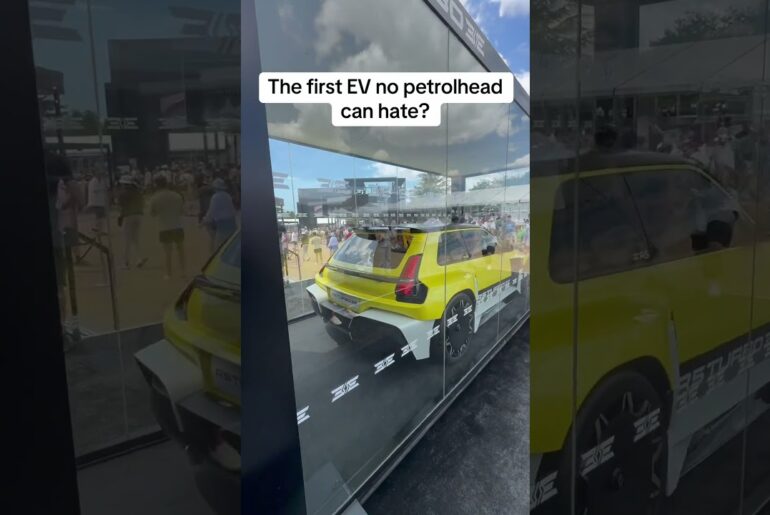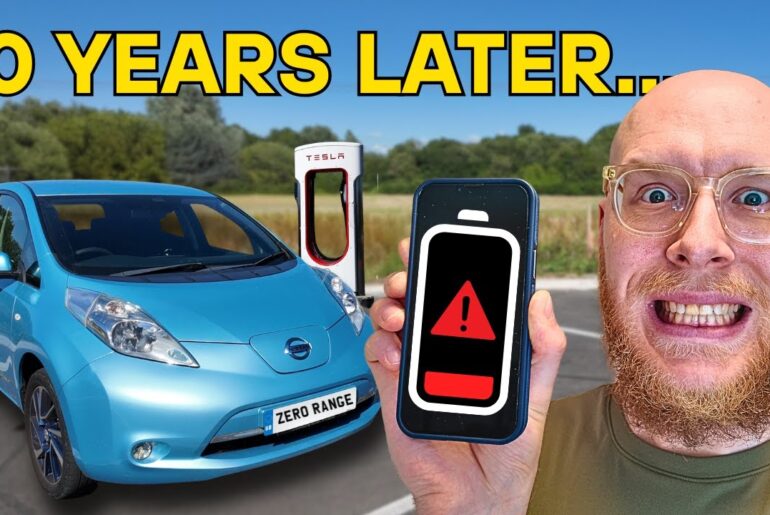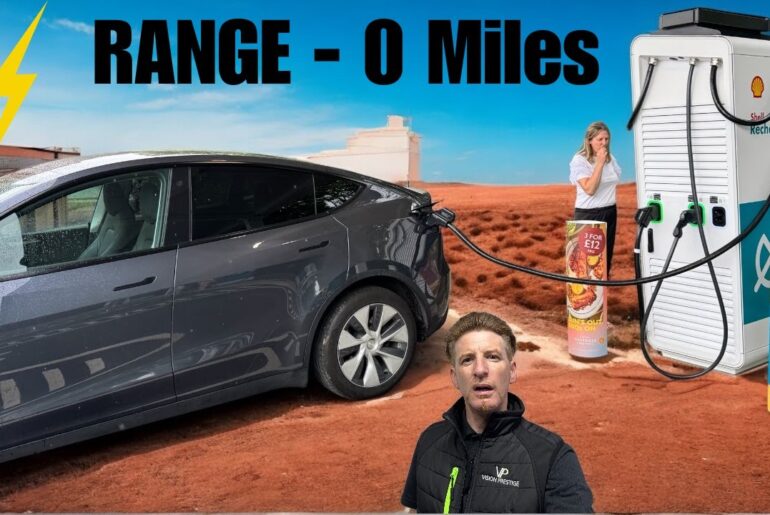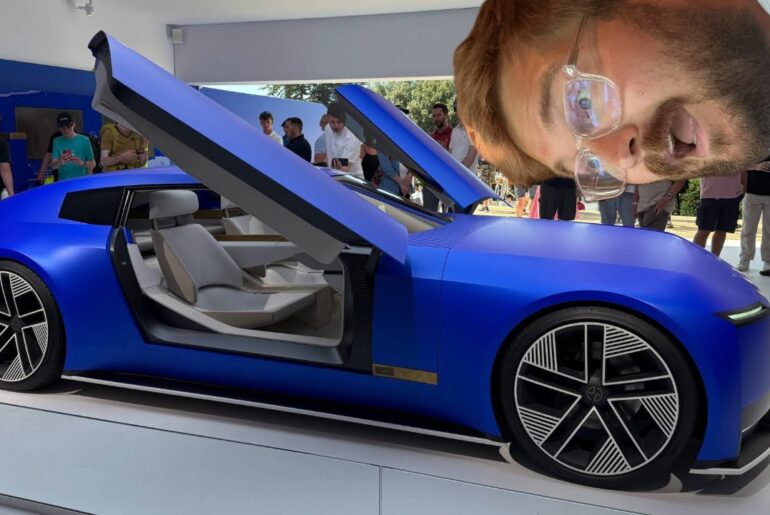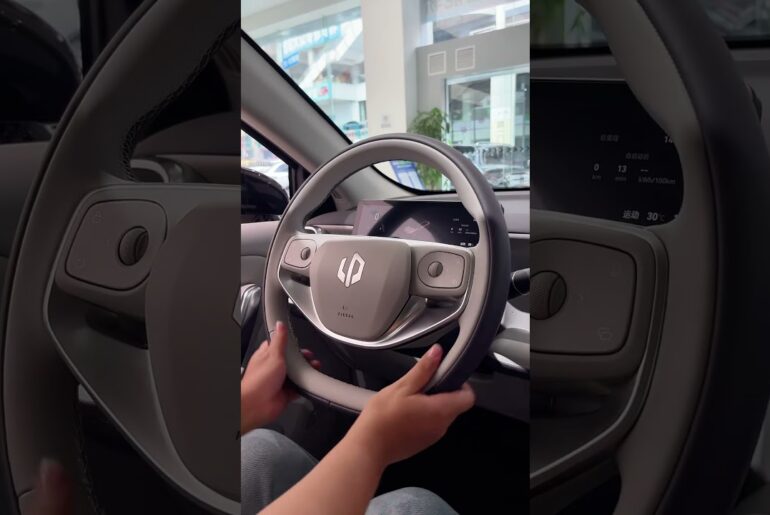The EV Market Crash – Why Buyers are Saying No to Overpriced Electric Vehicles!
Welcome to your road map to the latest in auto. Welcome to Highway Herald. In recent times, we’ve seen a significant deceleration in the growth of the EV market. The slowdown was so drastic that last year sales figures fell far short of the anticipated projections. With EVs making up less than 8%
Of all new vehicles in the U.S., the industry is in a state of alarm. Automakers are delaying their investments. The government and EPA are revising their plans to be less ambitious. And dealerships are far from pleased with EVs gathering dust on their lots. In short,
The EV market is experiencing a downturn and there are seven unmistakable signs. So buckle up and join us as we delve into them. Sign Number 7: A Shift in Strategy. Perhaps the most telling sign is the recent strategic shift announced by the EPA and Biden’s administration. Last April.
The EPA proposed stringent emission rules aimed at driving a large scale transition to electric vehicles in the coming years. The goal was to have two thirds of new vehicles be all electric by 2032. However, given the current trends, revisions were inevitable. We’ve recently learned that a new plan is in the works,
Aiming for 50% of new cars to be electrified. While the specifics are still somewhat murky, some experts speculate that this 50% includes all forms of electrified vehicles, such as hybrids and plug in hybrids. Regardless, one thing is clear The government has indirectly conceded that the original plan was more of a pipe dream
Than a result of thorough research and forecasting. Furthermore, many experts predict that even this revised plan will need further adjustments, suggesting that we are still decades away from EVs commanding half or more of the market. Sign Number 6: Drastic Price Reductions. As the EV market growth decelerated, automakers had to react,
With dealer lots overflowing and demand lagging behind supply. They resorted to slashing prices. Ford, for instance, offered significant discounts on the F-150 lightning. But even then, sales didn’t skyrocket. In fact, production was have this year to clear the backlog of EVs. Tesla pioneered this approach,
Putting pressure on traditional automakers and startups to incur further losses. These companies were already losing money on EVs due to production inefficiencies, and this strategy exacerbated the problem. For instance, Ford lost at least $36,000 on every F-150 lightning sold, leading to a total loss of around $5 billion in 2023 alone.
Consequently, these companies are deferring their EV investments, widening the gap between Tesla and other EV manufacturers in terms of technology and profitability. Before we proceed to sign number five, please subscribe to Highway Herald. Your support motivates us to create more videos like this.
Now moving to Sign Number 5: Dealerships Reluctant to Sell EVs. The EV market is currently grappling with a significant supply demand imbalance, with dealerships bearing the brunt. Their loss are brimming with EVs, taking almost 120 days to clear their inventory, compared to 71 days for gas powered cars.
EVs are slow sellers requiring dealers to invest more time and effort in sales. Typically, while a gas powered car is bought after a single visit, EV buyers usually make four visits before deciding. Meaning salespeople spend 75% more time to earn their commission. Markups are also challenging due to slow demand.
Moreover, automakers are demanding substantial investments from dealers who need to spend heavily on chargers training and more. Many are reluctant to do so, as evidenced by Buick losing half of its dealers last year due to GM’s ultimatum to sell electric cars. Sign Number 4: Reliability Concerns. Another major factor contributing to the slowdown
Of the EV market and the potential future collapse of the industry is the apprehension customers have towards purchasing EVs. It turns out that EVs are not as reliable as some have claimed, causing 80% more problems than gas powered cars. Issues with batteries and charging software glitches, poor build quality.
These are just some of the complaints from EV owners. In reality, apart from Tesla, which is close to the industry average in terms of reliability, no other automaker has managed to produce a reliable EV. To make matters worse, the repair costs for EVs are significantly
Higher, leading to increased insurance costs and poor resale value. A recent survey revealed that EVs lose half of their value in just five years on average. Sign Number 3: The Demise of Startups. Not too long ago, many experts touted EV startups as prime investment opportunities. However, that’s no longer the case.
EV startups are on the brink of collapse, signaling the onset of the EV market crash. Take a look at two of America’s most promising startups rivian and lucid Rivian backed by powerful investors, including Amazon and Ford, is struggling despite having launched a few exciting EVs
In the last year alone, it lost $40,000 on every vehicle sold, leading to an estimated total loss of $5.4 billion. Lucid is also in deep water, having lost over $650 million last year. The reason is clear they’re not selling enough EVs and haven’t optimized their production.
Rivian sold 57,000 vehicles last year and doesn’t plan any increase for the next year. Instead, it plans to lay off another 10% of its workforce to cut costs. As for attracting new investors, it will be a tough task as their shares are plummeting.
Just in the last week, they dropped 20% for both companies. If you’re still unsure, compare their values from three years ago to today in 2021. Rivian and lucid were worth $153 billion and $91 billion respectively. Today, Rivian is valued at $10 billion and lucid at $6.9 billion.
Sign Number 2: Traditional Automakers Hesitant to Invest in EVs. Much like startups, traditional automakers are hemorrhaging millions on EVs. We’ve already touched on Ford and its staggering losses, but it’s far from being the only one. Other automakers are feeling the pinch, too, leading to an interesting trend
With the market decelerating and other factors at play. Traditional automakers have had enough. They’re not prepared to sink more money into EVs and incur further losses. Instead, they’re indefinitely deferring their investments to salvage what they can. Ford serves as a prime example, once again
With its decision to have the production of the F-150 lightning. But that’s just the tip of the iceberg, considering the company’s decision to postpone $12 billion of EV investments planned for this year. The situation at GM isn’t much rosier. The persistent lack of profitability has led to some intriguing decisions,
Such as the delay of their most promising future EV, the All electric Silverado and Sierra pickups. Their production won’t commence until at least 2025, while the production of the new Electric Drive unit has been postponed for at least nine months. Sign Number 1: Consumers Reverting to ICE Vehicles. A certain
Segment of American consumers have purchased an electric vehicle, while others have had the chance to hear firsthand impressions. And it turns out that EVs aren’t living up to the hype. The issues with ownership are plentiful, ranging from higher than anticipated running costs. Problems at charging stations range anxiety and low reliability scores.
Given all these factors, it’s not surprising that the percentage of drivers committed to going electric dropped from 81% in 2021 to 52.1% in 2023, according to a recent study. The same study also revealed that only 37% of Ford Mustang Mach-E owners opted for another electric car.
Conversely, nearly 46% purchased a gas powered car, clearly indicating that consumers aren’t solely interested in zero emissions. Factors like vehicle type, convenience and capabilities still hold significant weight, and in these aspects, electric cars evidently still fall short compared to their internal combustion engine counterparts.
Thank you for watching and joining us on this journey. Don’t forget to subscribe to Highway Herald to stay updated on the latest vehicle updates and upcoming videos. See you next time.
In this video, we delve into the current state of the Electric Vehicle (EV) market and explore seven signs indicating a potential crash. We discuss everything from the struggles of EV startups to the reluctance of dealerships to sell EVs. Don’t miss out on this insightful analysis!
✳️ 00:00 | Introduction
🛻 00:48 | Sign Number 7: A Shift in Strategy.
🛻 01:46 | Sign Number 6: Drastic Price Reductions.
🛻 02:49 | Sign Number 5: Dealerships Reluctant to Sell EVs.
🛻 03:40 | Sign Number 4: Reliability Concerns.
🛻 04:28 | Sign Number 3: The Demise of Startups.
🛻 05:49 | Sign Number 2: Traditional Automakers Hesitant to Invest in EVs.
🛻 06:54 | Sign Number 1: Consumers Reverting to ICE Vehicles.
This video provides a comprehensive overview of the challenges facing the EV market. From the struggles of startups like Rivian and Lucid to the hesitations of traditional automakers, we cover it all. Don’t forget to watch till the end for a complete understanding of the situation!
#HighwayHerald #electricvehicle #electrictruck #electricsuv #electriccar #tesla #fordtrucks #gmctrucks
🔔 Don’t forget to ring the bell icon for instant notifications on our latest videos. Enjoyed the ride? Please give this video a thumbs up and spread the highway vibes to your friends!
Keep your engines running for more content on new arrivals, head-to-head battles, and in-depth explorations in the realm of vehicles!
Disclaimer: This video remains unbiased and unsponsored. Views and opinions belong solely to Highway Herald.

